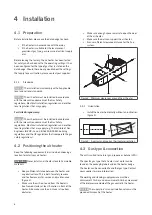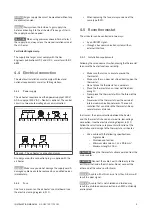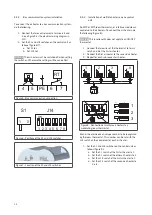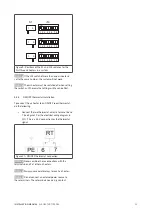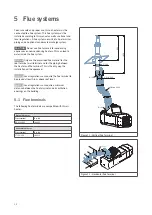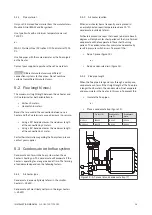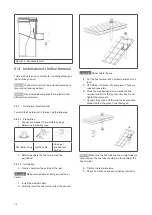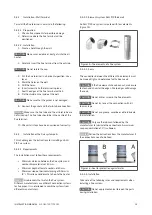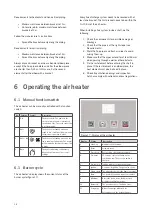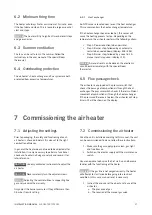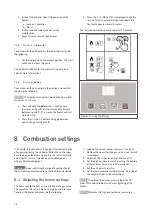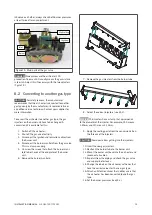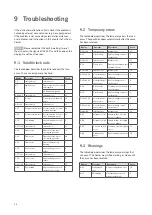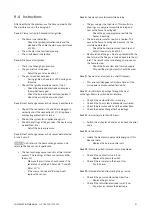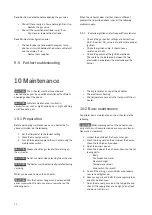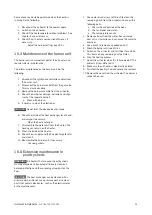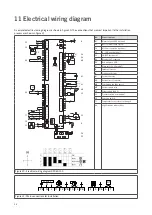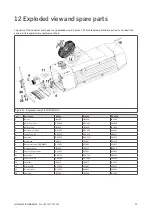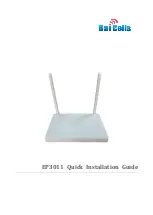
21
INSTALLATION MANUAL
AIR HEATER TYPE DXC
9.4 Instructions
After identifying the problem, use the Case number to find
the possible cause in this paragraph.
Case 1:
Flame lasts only 5 seconds after ignition.
• The flame is not detected:
–
Check the ignition/ionisation cable and the
electrode. The cable should have a resistance
of 1 kΩ.
• The air heater is not earthed properly.
• The circuit board is defective.
Case 2:
No flame after ignition.
• There is not enough gas pressure.
• The gas mixture is too poor:
–
Adjust the gas valve (see §8.1).
• The gas valve does not open:
–
During ignition, check for a 230 V voltage on
the valve.
• Check if the ignition electrode sparks. If not:
–
Check the cable and electrode and replace
them when damaged.
–
Check the burner control unit and replace it
when it does not give a spark output.
Case 3:
Heat exchange sensor or flue sensor is overheated.
• Check if the connectors J12 and J6 are plugged in
correctly and if the connection J12[1-4] (optional
overheating protection) is closed.
• Check if the system fan supplies enough air.
• Check the settings of the gas valve. The heater may
be overfired. If so:
–
Adjust the burner pressure.
Case 4:
Heat exchange sensor or flue sensor not detected,
or short circuit.
NOTICE
L-25 refers to the heat exchange sensor. L-26
refers to the flue sensor, if applicable.
• The heat exchange sensor consists of two internal
sensors. The readings of these sensors may differ
too much:
–
Measure the resistance of each sensor. The
resistance should be 20 KΩ at 25 °C and 25
KΩ at 20 °C.
–
If the measured values differ too much,
replace the sensor.
Case 5:
Too many flame failures while burning.
• The gas supply is not constant. This results in a
drop in gas supply pressure while burning and
causes the flame to extinguish.
–
Check the gas supply pressure while the
heater is burning.
• The burner pressure for Low fire is too low. This
causes the flame to extinguish because it is too
small to be detected.
–
Check the burner pressure at Low fire and
adjust if necessary (see §8.1).
• Recirculation of flue gas. Due to a problem with the
flue terminal the flue gas is sucked back into the air
inlet. This results into a lack of oxygen and causes
the flame to stop.
–
Check the flue system and fresh air supply.
Only certified, original parts should be used.
Case 9:
Too many reset actions in a short timespan.
• This error will disappear after some time or if the
main power is disconnected for a while.
Case 11:
Insufficient air passage through the heat
exchanger. Pressure switch does not close.
• Check if the combustion fan is running.
• Check if the flue system is blocked or restricted.
• Check the pressure switch and the connections.
• Check the heat exchanger for flue leakage.
Case 12:
E-error for more than 24 hours.
• Switch the air heater off and on and check the error
code.
Case 13:
Internal error.
• Isolate the electrical supply and reenergise. If this
does not help:
–
Replace the burner control unit.
Case 14:
Pressure switch is closed in stand-by mode.
• Check if the contact is stuck. If so:
–
Replace the pressure switch.
• Check if there is water in the hose. If so:
–
Dry the hose.
Case 15:
Flame detected after closing the gas valve.
• Check if the gas valve closes too slow. If so:
–
Replace the gas valve.
• Check if the ionisation electrode is wet. If so:
–
Dry, clean or replace the electrode.


